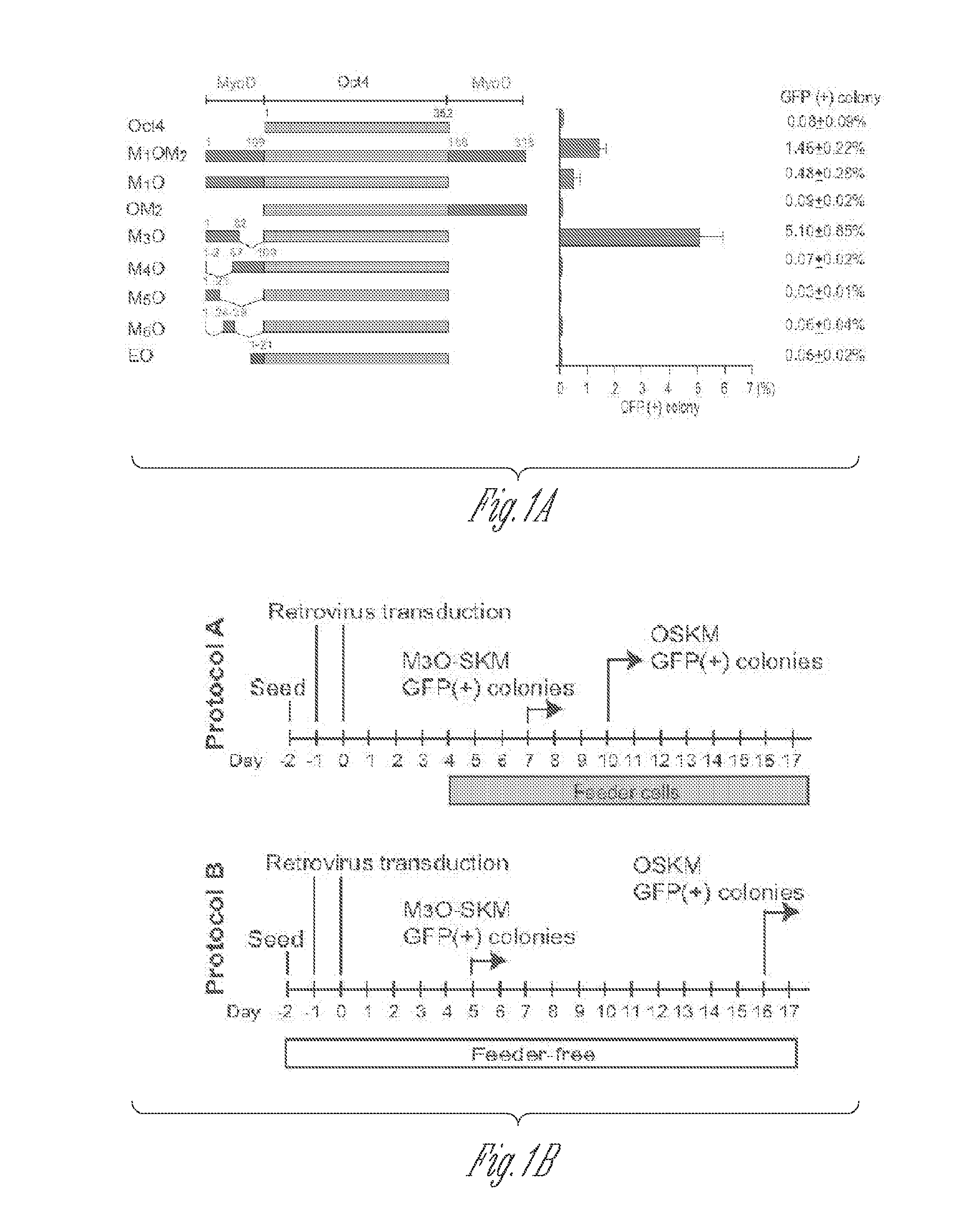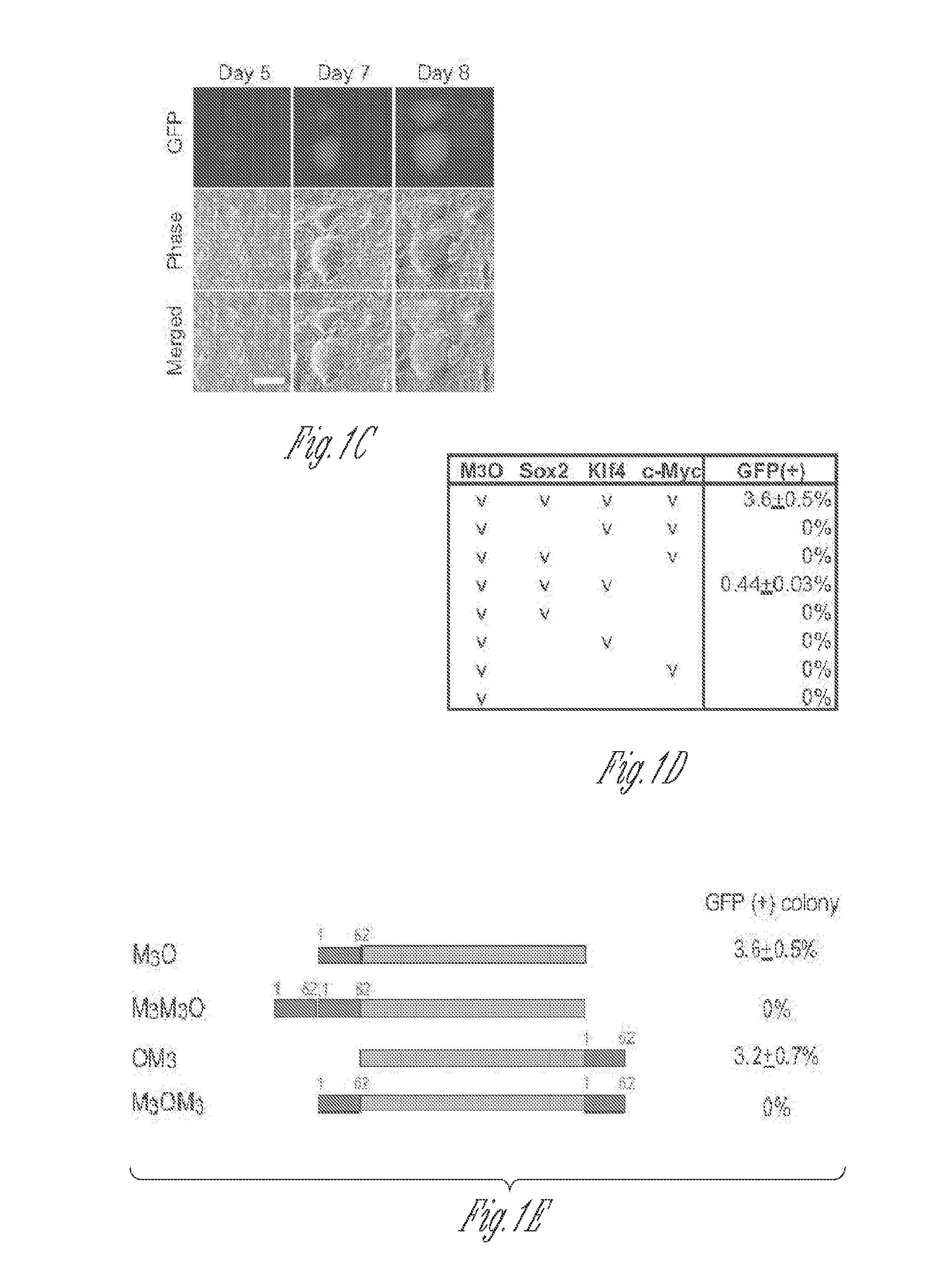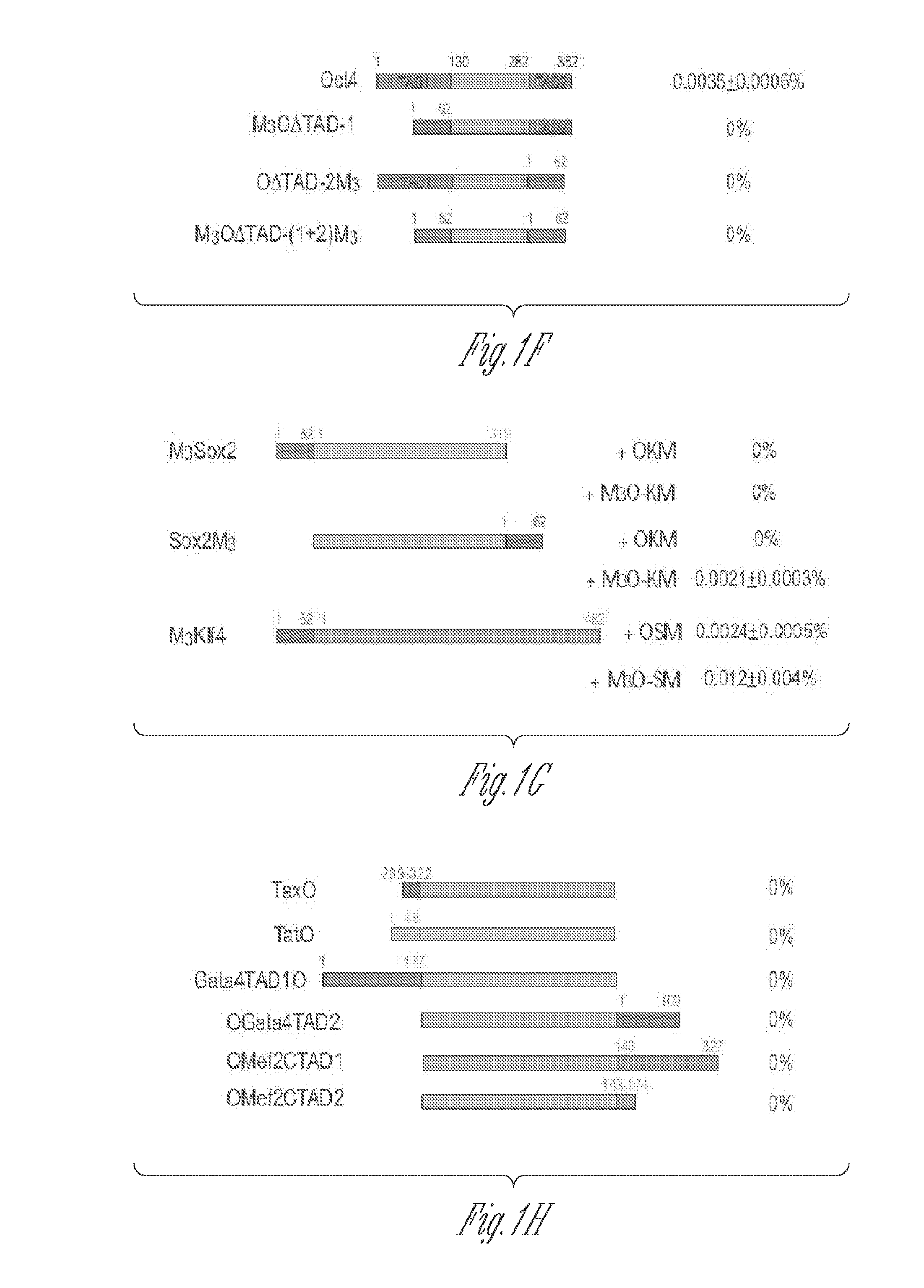Induced pluripotent stem cells
a technology stem cells, applied in the field of pluripotent stem cells, can solve the problems of over a month-long process of establishing ipsc clones, and achieve the effect of facilitating the recruitment of the oct4-binding paf1 complex and increasing chromatin accessibility
- Summary
- Abstract
- Description
- Claims
- Application Information
AI Technical Summary
Benefits of technology
Problems solved by technology
Method used
Image
Examples
example 1
Materials and Methods
[0051]Preparation of Mouse iPSCs
[0052]Full-length and deletion mutants of mouse Oct4 cDNA were fused with various TADs and inserted into the pMXs-IP vector4. Polycistronic cDNAs encoding Sox2, Klf4 and c-Myc were transferred from the 4F2A lentiviral vector5 to the pMXs-IP vector. pMXs-IP vectors encoding OSKM separately (Addgene) were also used in some experiments. These pMXs-IP vectors were transfected into Plat-E cells6 with Fugene 6 (Roche). Virus supernatant was harvested 48 and 72 hr later and filtered through a 0.45 μm syringe filter. MEFs were prepared from Oct4-GFP mice which harbour an IRES-green fluorescence protein (GFP) fusion cassette downstream of the stop codon of the Oct4 gene (Jackson Laboratory #008214)7. All animal experiments were conducted in accordance with the animal experiment guidelines of University of Minnesota. For chimera experiments, MEFs were prepared from mice that harbour the Oct4-GFP allele and ROSA26-lacZ allele. MEFs were seed...
example 2
[0112]MEFs transduced with M3O-SKM were seeded onto feeder cells at the density of 2000 cells / well of a 12-well plate. This cell density is around 15-fold lower than the density used in protocol described above. In addition, 10% fetal bovine serum was replaced with 15% KnockOut Serum Replacement (KSR, Invitrogen) in the culture medium. Combination of the decreased cell density and KSR increased the efficiency of making iPSCs to around 27% by day 12. In contrast, the efficiency with OSKM was around 1% under the same condition.
[0113]The herpes simplex virus type 1 protein VP16 is a powerful transactivator. To test if the VP16 TAD could also raise the efficiency of making iPSCs, two fusion genes were prepared between mouse Oct4 and the VP16 TAD. The first fusion gene called VP16LO is composed of the full-length VP16 TAD (amino acids 411-490) fused to the amino terminus of Oct4. The second fusion gene called VP16SO comprises the second half of the VP16 TAD (amino acids 446-490) fused to...
PUM
| Property | Measurement | Unit |
|---|---|---|
| Fraction | aaaaa | aaaaa |
| Temperature | aaaaa | aaaaa |
| Temperature | aaaaa | aaaaa |
Abstract
Description
Claims
Application Information
 Login to View More
Login to View More - R&D
- Intellectual Property
- Life Sciences
- Materials
- Tech Scout
- Unparalleled Data Quality
- Higher Quality Content
- 60% Fewer Hallucinations
Browse by: Latest US Patents, China's latest patents, Technical Efficacy Thesaurus, Application Domain, Technology Topic, Popular Technical Reports.
© 2025 PatSnap. All rights reserved.Legal|Privacy policy|Modern Slavery Act Transparency Statement|Sitemap|About US| Contact US: help@patsnap.com



